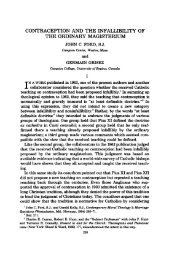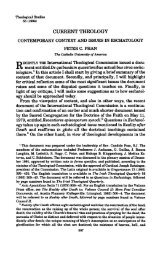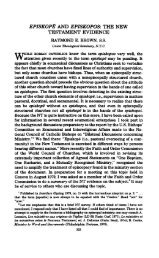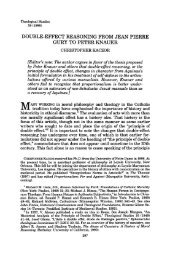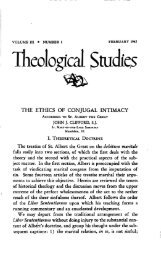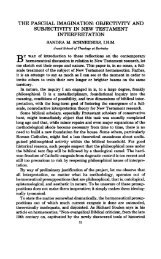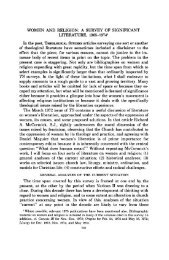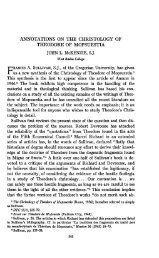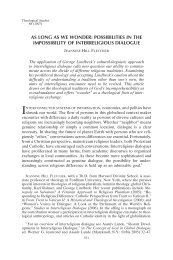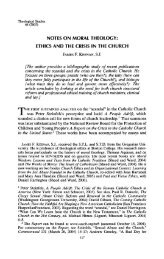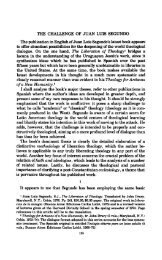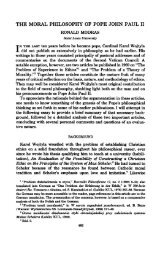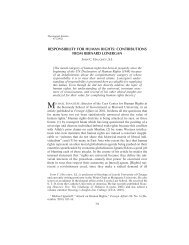SYMBOL, MYTH, AND THE BIBLICAL REVELATION AVERY ...
SYMBOL, MYTH, AND THE BIBLICAL REVELATION AVERY ...
SYMBOL, MYTH, AND THE BIBLICAL REVELATION AVERY ...
Create successful ePaper yourself
Turn your PDF publications into a flip-book with our unique Google optimized e-Paper software.
<strong>SYMBOL</strong>, <strong>MYTH</strong>, <strong>AND</strong> <strong>THE</strong> <strong>BIBLICAL</strong> <strong>REVELATION</strong> 5<br />
existence of individuals and gives meaning and direction where these<br />
previously seemed to be absent. It also serves to bring men together<br />
into solidarity with one another. Christians of all ages and nations are<br />
welded into a community by their common allegiance to the standard<br />
of the Cross.<br />
Thus far we have been speaking of the symbolic realities which form<br />
the substance of the biblical message. If we turn now to the language of<br />
Scripture, we immediately note that it is highly figurative and frequently<br />
poetic. The sacred writers quarry their images from many<br />
sources. Sometimes they build on the natural symbolic capacities of<br />
elemental realities such as fire, water, sun, bread, wine, and the like.<br />
Other images they take over from the social institutions of Israel.<br />
Thus, they speak of God as Father, King, Judge, Shepherd, Vinedresser,<br />
and Spouse. And all these images, once they have imbedded<br />
themselves in the literature and thinking of Israel, begin to take on a<br />
history of their own, parallel to that of the people. As Austin Farrer<br />
has observed, 5 calamities such as the collapse of the Davidic monarchy,<br />
the destruction of the Temple, and the Babylonian captivity providentially<br />
served to purify the images, to detach them from their terrestrial<br />
moorings, and in this way to give them a higher and more universal<br />
spiritual meaning. To give but one example: it was necessary<br />
for the Davidic monarchy to be irrevocably overthrown before the<br />
term "Son of David" could be an apt designation for the kind of<br />
Messiah Jesus was to be.<br />
The literary imagery of the Old Testament was taken up with added<br />
power in the New. Christ described His own status in terms of the Old<br />
Testament figures. The parables which He preached are replete with<br />
Old Testament reminiscences. The Johannine Gospel, the most symbolic<br />
of the four, is built about dominant images such as the Good<br />
Shepherd, the True Vine, the Manna, the Living Water, and the Light<br />
of the World. Such symbols, as C. H. Dodd remarks, "retire behind<br />
the realities for which they stand, and derive their significance from<br />
the background of thought in which they had already served as symbols<br />
for religious conceptions." 6 The same is true in varying degrees of<br />
the other New Testament writings. The most highly figurative of all<br />
is, of course, the Apocalypse, which writes of heaven and things to<br />
6 The Glass of Vision (Westminster, Eng., 1948) esp. chap. 8.<br />
6 The Interpretation of the Fourth Gospel (Cambridge, Eng., 1958) p. 137.



